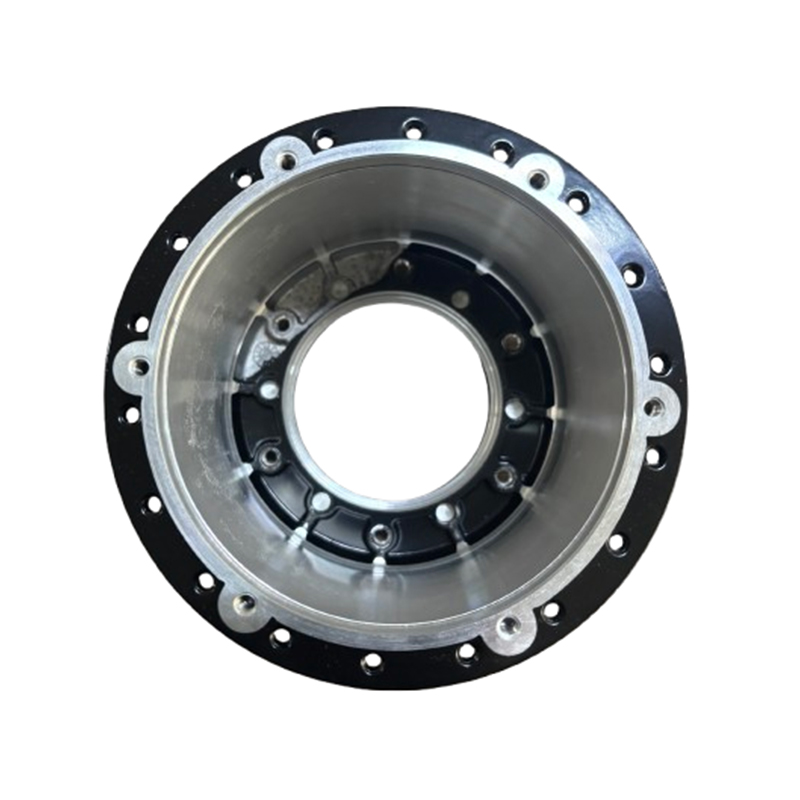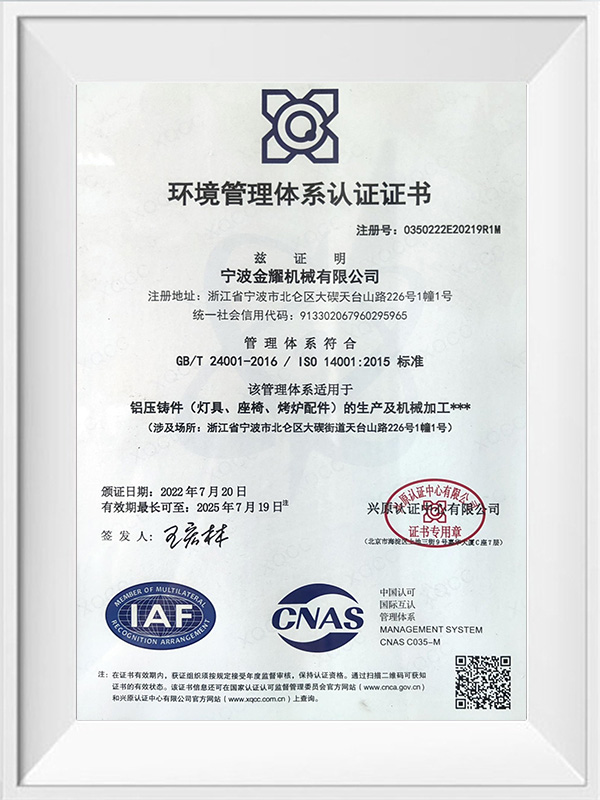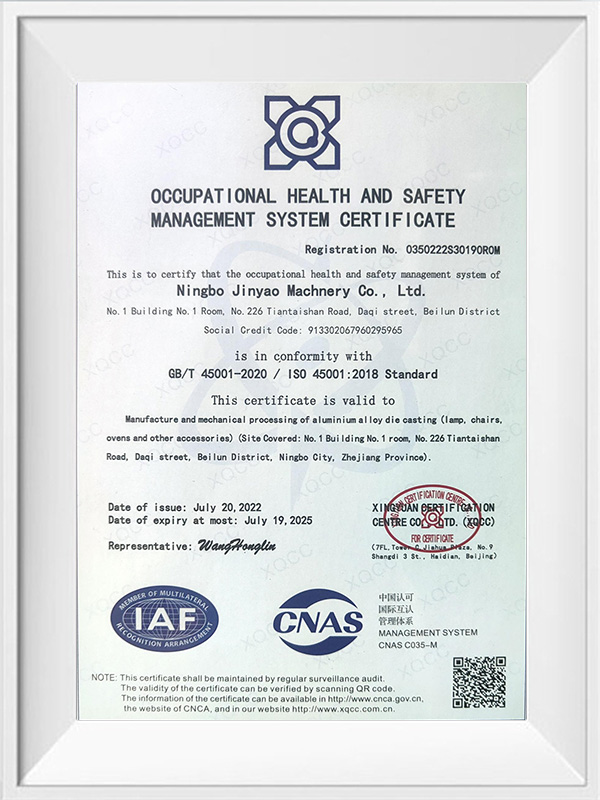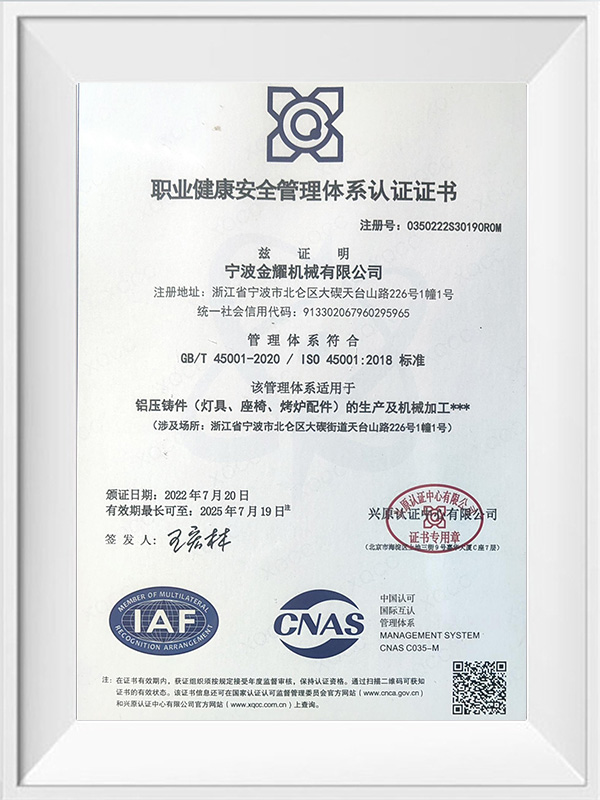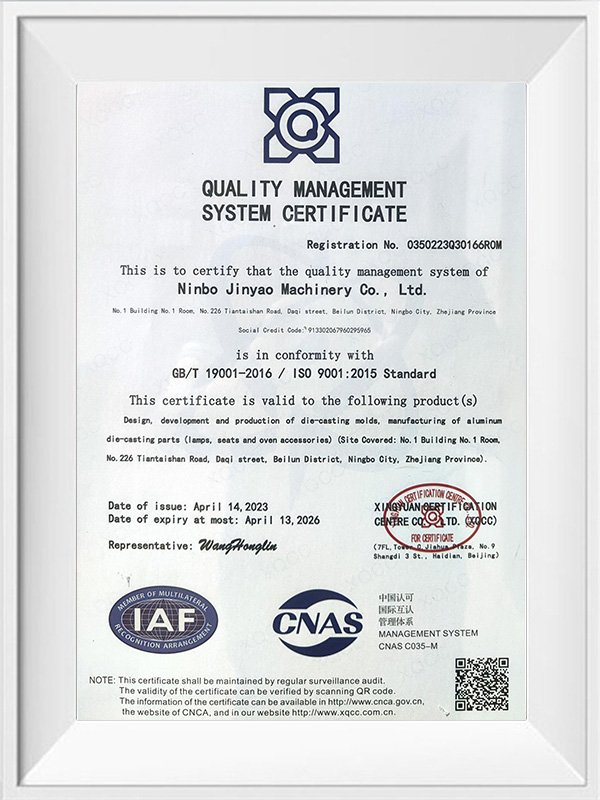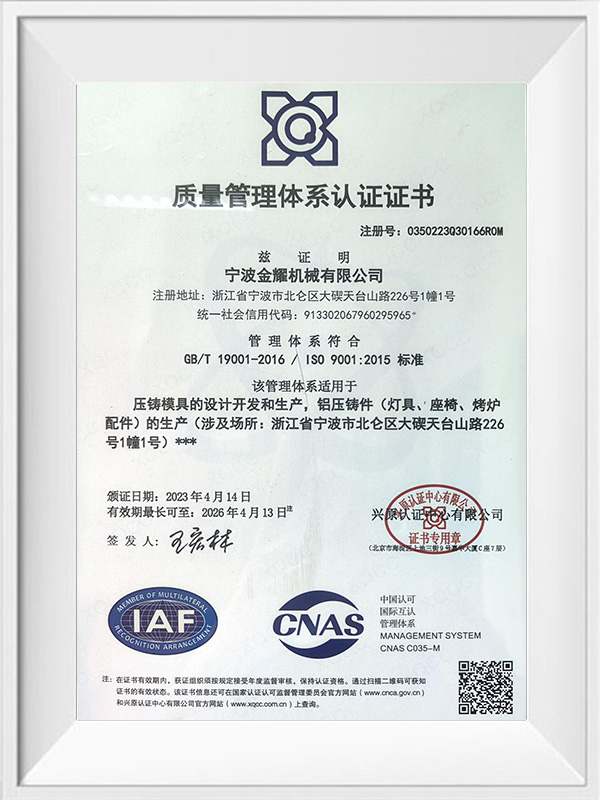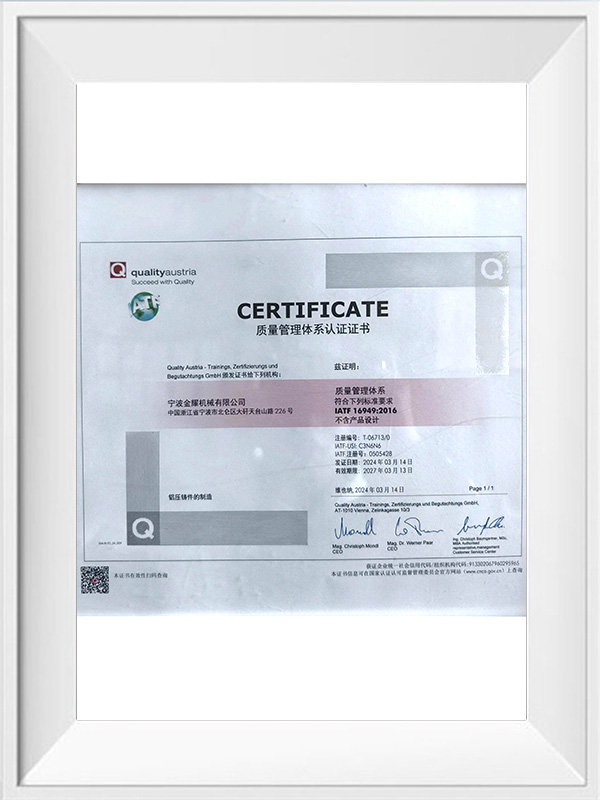Ningbo Jinyao Machinery Co., Ltd. is a China Bicycle power motor die castings Manufacturers and Bicycle power motor die castings Suppliers . And is an enterprise integrating industry and trade, dedicated to the production of precision castings of aluminum alloy materials and the design and manufacture of high-pressure die-casting molds. Adopting advanced vacuuming, pin extrusion, and high-pressure spot cooling processes, it is a large-scale professional production base for diversified casting in China. It integrates a precision casting factory and a mechanical processing plant, and can produce precision castings and various types of castings annually. More than 10,000 tons, mainly exported to Japan, Sweden and other countries. Among the customers we cooperate with are many OEM customers of trains, cars, forklifts, outboards, communication equipment, lamps, furniture parts and engineering machinery, including the world's top 500 companies. , has become an important supplier of their precision castings in China.
Bicycle power motor die castings Manufacturers
- Traditional automobile die castings
- New energy automobile die castings
- Communication housing die castings
- Electric scooter die castings
- Bicycle power motor die castings
- Motorcycle accessories die castings
- Motor housing die castings
- Engineering machinery die castings
- Lighting die castings
- Outboard motor die castings
- Furniture accessories die castings
- Grill accessories die casting
- Photovoltaic inverter die castings
Bicycle power motor die castings play a key role in bicycle power assist systems.
Common types include motor housings, end caps, and gearbox casings. The motor housing, which encloses the internal components of the motor, is typically made of aluminum alloy through die casting. It has thermal conductivity and corrosion resistance, effectively dissipating heat generated during motor operation while protecting the internal components. For example, high-end bicycle power motors use magnesium alloy housings, which reduce weight while maintaining strength and improving portability and riding performance. End caps are mounted on both ends of the motor to seal the housing and must have good sealing and mechanical strength, often featuring mounting and wiring holes. For motors with a gear transmission system, the gearbox casing is critical. It houses the gear set and other transmission components and must withstand the forces and torque generated during transmission. Therefore, it requires high strength and precision to ensure proper gear meshing and transmission efficiency.
Bicycle power motor die castings offer numerous advantages. First, they provide high precision. The die-casting process can produce complex parts with tight dimensional accuracy, meeting the motor's precision requirements, such as the fitting accuracy between the motor housing and end caps, which directly affects sealing and stability. Second, die casting is highly efficient and suitable for mass production, enabling the rapid manufacturing of large quantities of die castings, improving efficiency, and reducing costs to meet the growing demand for bicycle power motors. Additionally, die castings offer mechanical properties, including high strength, hardness, and toughness, ensuring the motor operates reliably under various riding conditions and withstands heavy loads and impacts. Finally, die castings provide great design flexibility, allowing for the creation of various shapes and structures to meet motor design needs. For instance, motor housings with special heat dissipation structures can be designed to enhance cooling efficiency.
In terms of the manufacturing process, mold design and manufacturing are crucial. The quality of the mold directly impacts the quality and production efficiency of the die castings. Mold design must consider factors such as the shape, dimensions, precision requirements, and ejection method of the castings to ensure the production of high-precision, reliable molds. Next is the melting and casting process, which involves selecting suitable die-casting materials such as aluminum alloys, controlling temperature and composition to ensure metal quality, and maintaining proper filling speed and pressure during casting to ensure complete part formation. Finally, post-processing, including deburring, polishing, and surface treatments, improves surface quality and appearance. For high-performance die castings, additional heat treatments or aging processes may be required to enhance mechanical properties.
In conclusion, bicycle power motor dies castings are indispensable components of the power assist system, and their quality and performance directly affect the overall quality and user experience of bicycle power motors.
-
What Innovations Are Shaping the Future of Die Casting in Photovoltaic Inverter Design?View More
The photovoltaic (PV) inverter industry is evolving rapidly, driven by technological advancements and the increasing demand for renewable energy solutions. Die casting, a key manufacturing process for PV inverter components, is undergoing several innovations that enhance performance, reduce costs, a...

-
Why Is Aluminum Die Casting Better Than Other Metal Casting Methods?View More
1. Introduction: The Evolution of Metal Casting Metal casting has been one of the most fundamental manufacturing processes for centuries. From simple tools to complex automotive and aerospace components, casting allows molten metal to take shape in reusable molds.However, as industries have evolved,...

-
Why Should Manufacturers Choose Die Casting for Gearbox Systems Over Other Methods?View More
Die casting has become the go-to manufacturing process for producing gearbox systems, offering a combination of precision, strength, cost-efficiency, and design flexibility. In this article, we will explore in detail why manufacturers should choose die casting for gearbox systems over other methods ...


 English
English Español
Español Deutsch
Deutsch русский
русский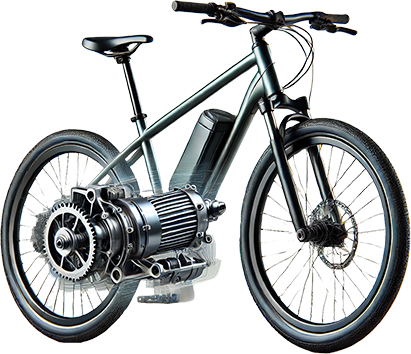
 Traditional automobile die castings
Traditional automobile die castings New energy automobile die castings
New energy automobile die castings Communication housing die castings
Communication housing die castings Electric scooter die castings
Electric scooter die castings Bicycle power motor die castings
Bicycle power motor die castings Motorcycle accessories die castings
Motorcycle accessories die castings Motor housing die castings
Motor housing die castings Engineering machinery die castings
Engineering machinery die castings Lighting die castings
Lighting die castings Outboard motor die castings
Outboard motor die castings Furniture accessories die castings
Furniture accessories die castings Grill accessories die casting
Grill accessories die casting Photovoltaic inverter die castings
Photovoltaic inverter die castings